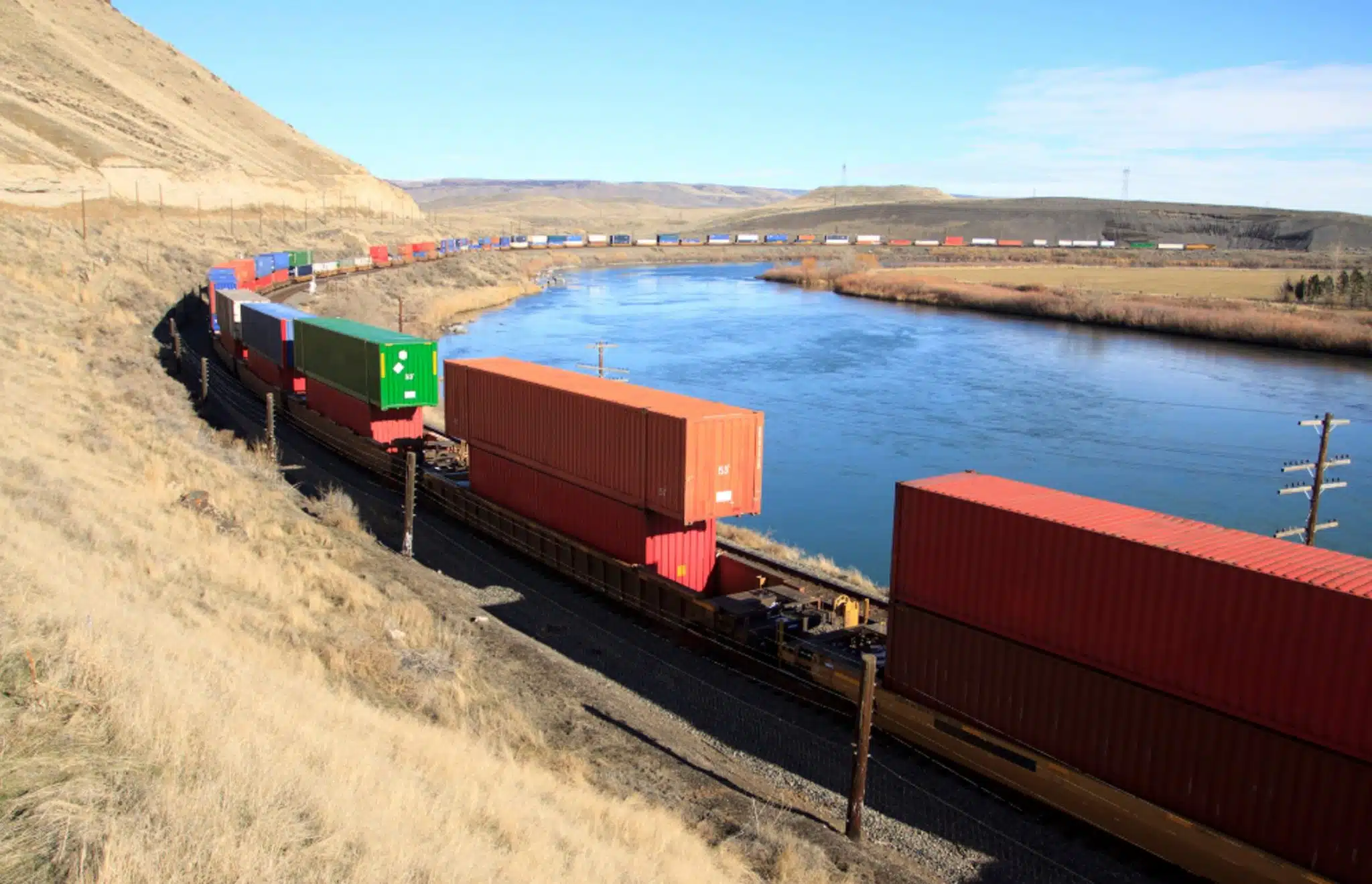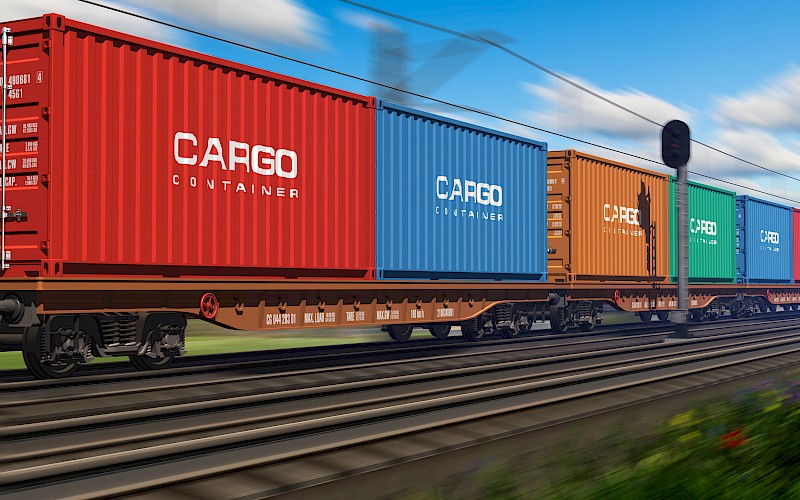
Check out our latest market updates with all you need to know about the air freight, ocean freight and ground freight markets.

As your logistics provider, Crane Worldwide Logistics believes in being the client advocate. Our goal is to provide you with the most efficient service for your logistics needs from China to European countries. The Silk Road railway track linking 12,000 kilometers of the track via the Trans-Siberian Railway is an increasingly popular transportation method from China to Europe. Hence, China’s railway freight solution to Europe is fast becoming a popular logistics solution for cargo.
The team at Crane Worldwide Logistics has recognized many challenges for our international clients who have traditionally utilized air freight and FCL (Full Container Load) / LCL (Less than Container Load) ocean freight services. The rail freight container transport solution from China to Europe has been key to lower transport costs via the silk road in an environmentally friendly solution that fully utilizes the china railway from central Asia.
We have developed a railway freight solution that can provide a seamless service to problems encountered with production delays, high inventory levels, capacity constraints, and lengthy transit times that impact our client’s supply chains. China railway container transport could be an option for your cargo.
Crane Worldwide Logistics offers a rail freight solution that connects China and Japan, Korea, and Vietnam to Europe. Every 72 hours, our clients have the opportunity to utilize the rail solution from China to Europe. The routing is via Alashankou (16-18 days) instead of the frequently used Manzhouli location (19-21 days). We will select the most efficient rail routes for your business needs. Need more information on the China to Europe train routes? Get in touch.
Using freight trains as an alternative logistics service to air freight or ocean freight, we can guarantee to help minimize stock levels by up to 40%. Our rail freight experts at Crane Worldwide focus on bringing the best transport solutions for your cargo needs.
How long is the transit time from China to Europe using the rail freight solution?
Depending on the Origin/Destination, it usually takes about 16-19 days from Terminal to Terminal using block trains.
How many stops does the train make during the journey?
The Train makes at least 2 Stops to switch the container onto a different rail car because of different gauges. (Russian Gauge : 1,520mm; European & China Gauge : 1,435mm)
How often do rail freight cargo trains operate?
Dependent upon the origin terminal, several weekly departures are going from China to Europe and Europe to China.
How safe is my cargo using rail freight?
Rail freight transportation is safe, and the border terminals are protected in a similar way to ocean terminals. A moving train cannot be stopped, so the chances of your cargo getting stolen are similar to ocean freight.
Are the cargo loading requirements of the container the same as other methods of freight transportation?
Cargo, sensitive to vibration, can be protected with vibration-isolating pallets. Additionally, the rail freight operator requires pictures before, during, and after the loading to ensure a seamless customs process.
What is the maximum payload of a container?
Payload per Container is currently standard and similar to Ocean Freight Container since we are using ISO standard 40ft. Container
Can a 20ft. Container be transported via rail freight?
Crane Worldwide suggests using a 40ft. The container for rail transportation, as the whole rail car, must be booked with the operator. One rail car fits one 40ft. Container. There is a possibility to load 2 x 20ft. Containers onto one rail car; however, rail car operators tend to off-load the container at terminals and wait for an additional 20ft, to maximize the use of the rail freight space available.
Our goal is to work with you to understand your logistics challenges, now and in the future. Understanding your planning and forecasting your future requirements will enable the team to provide seamless door-to-door transportation to address your rail freight shipment requirements. Reliable, secure, and cost-effective rail freight services can make a difference in your logistics operation. During this period of uncertainly due to the Coronavirus’s implications around the world, please reach out below if we can be of assistance!
Did you know? The rail freight transportation service can also be utilized from other Asian countries. For example, we can transport from Vietnam into Europe via railfreight, you can read more here
As supply chains face the challenging environment that the Coronavirus COVID-19 pandemic has created, the global logistics team supports our clients with the transportation of medical supplies and urgent freight requests; read more. Please reach out if we can support your logistics operations at this time.
The chargeable weight is the greater of the package's actual weight or dimensional weight.
The introduction in the most recent version explains the purpose and use of the Incoterms® rules, identifies differences between Incoterms® 2010 and Incoterms® 2020
Free Carrier (FCA) has been revised for Incoterms® 2020 to cater to a situation where goods are sold FCA for carriage by sea and buyer or seller (or either party’s bank) requests a bill of lading with an on-board notation. FCA in article A6/B6 now provides for the parties to agree that the buyer will instruct the carrier to issue an on-board bill of lading to the seller once the goods have been loaded on board, and for the seller then to tender the document to the buyer (often through the banks).
All costs associated with a given Incoterms rule now appear at article A9/B9 of that rule, allowing users to see the full list of expected costs at a glance. In addition to the aggregated presentation, the costs associated with each item still appear in the respective articles to accommodate a user who wants to focus on a specific aspect of the sale transaction.
The Incoterms® 2020 rules provide for different levels of insurance coverage in the Cost Insurance and Freight (CIF) rule and Carriage and Insurance Paid To (CIP) rule.
CIF Incoterms® rule, which is reserved for use in maritime trade and often used in commodity trading, the Institute Cargo Clauses (C) remains the default level of coverage, giving parties the option to agree to a higher level of insurance cover. The CIP Incoterms® rule now requires a higher level of cover, compliant with the Institute Cargo Clauses (A) or similar clauses.
It recognises that not all commercial trade transactions from the seller to the buyer are conducted by a third-party carrier.
The latest edition includes clearer and more detailed security-related obligations in articles A4 on carriage and A7 on export/import clearance of each Incoterms® rule. Costs relating to these requirements also appear in the consolidated costs article, A9/B9.